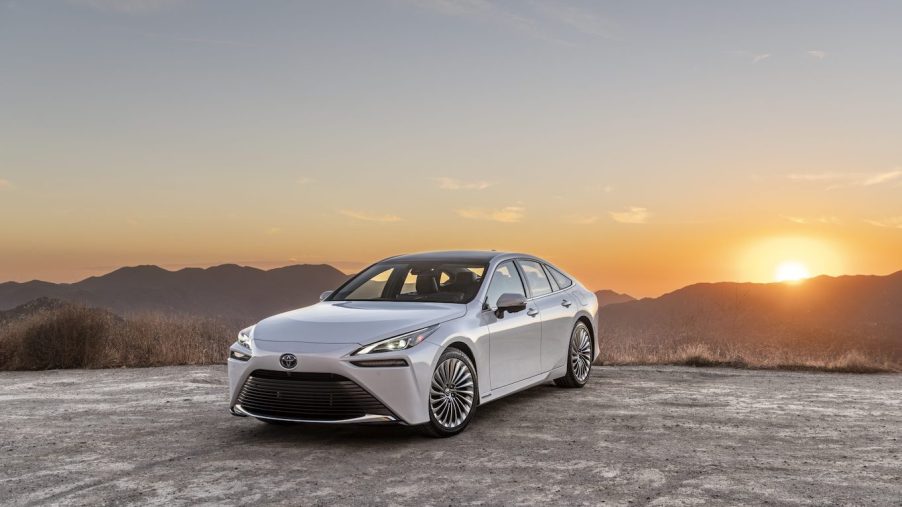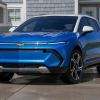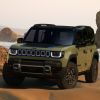
Toyota’s Niche EV Is Starting to Become More Popular
It took a while for drivers to warm up to EVs, but now there are more and more electrified cars on the road each year. Despite that, the Toyota Mirai has remained a niche within a niche for quite a while. Now it seems like people are appreciating this Toyota EV, but how much popularity has it really gained?
The Toyota Mirai is a pretty weird car
For starters, you have to be an extremely dedicated Mirai fan to buy this vehicle. You can’t really drive it outside the West Coast because it’s a hydrogen fuel-cell-powered car. With the exception of one solitary station in Hawaii, your only re-fueling options are located in California.
Limited availability aside, the Toyota Mirai also has some odd quirks that might steer buyers away. While the Mirai has seating for five passengers, its powertrain warrants an intrusive interior tunnel that takes up a good portion of middle-seat rear legroom. Edmunds test drivers also didn’t think that any of the seats offer enough support.
You won’t get any use out of the Toyota Mirai if you have small children. There are LATCH anchors present, but installing a car seat significantly compromises the comfort of front-seat passengers. Additionally, the Toyota Mirai has a tiny cargo hold with less than 10 cubic ft of space.
The Toyota Mirai is a small car in general that may not be suited for drivers of above-average heights. Visibility is apparently very poor, as Edmunds only recommends the Limited trim with the 360-degree parking monitor. This model also comes with heated and ventilated seats, though the power from them is somewhat weak.
The ride quality is reportedly excellent if the Toyota Mirai has enough room for you. The cabin is quiet and remains undisturbed by almost any road imperfection. There’s nothing impressive about its acceleration or handling, but it does have above-average electric range estimates. The base XLE trim gets 402 miles and the Limited model can be driven for 357 miles. Hyundai will also cover the first $15,000 dollars worth of hydrogen fill-ups for the purchase of all new Mirai models.
This Toyota EV is attracting more buyers
The Toyota Mirai had a massive 646% sales increase in July compared to the same month in 2022. By the end of the month, the Toyota Mirai had increased its 2023 sales to a total of 2,185. It was 50% less popular at this time in 2022, according to GoodCarBadCar data.
The Toyota Mirai is certainly better than it used to be, especially after its much-needed exterior facelift in 2021. It also gained a new platform to match the Lexus LS and had a drastic range increase as part of its redesign.
Since the Honda Clarity Fuel Cell was discontinued in 2021, the Mirai’s only notable competitor in the U.S. is the Hyundai Nexo. That car has only sold 139 units this year, a massive downgrade compared to its performance in 2022. The Toyota EV’s superiority in this area is extremely impressive, considering that the Nexo has better warranty coverage and more cargo space.
The Toyota Mirai’s sales are still relatively low
Only 463 Toyota Mirai units were purchased in the month of July. For comparison, both the Toyota Camry and Corolla have sold well over 100,000 examples each this year. However, both of those cars have the advantage of being available nationwide.
We wonder what the Mirai’s sales would look like if there were improvements made to the hydrogen fuel cell infrastructure. It might be even more popular if it had a bigger powertrain option or some extra interior space. Still, even with less than 5,000 units sold this year, this niche Toyota EV is dominating the market for hydrogen fuel cell vehicles.


